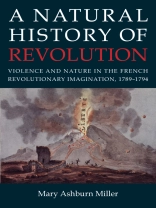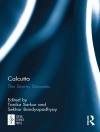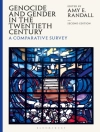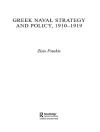How did the French Revolutionaries explain, justify, and understand the extraordinary violence of their revolution? In debating this question, historians have looked to a variety of eighteenth-century sources, from Rousseau’s writings to Old Regime protest tactics. A Natural History of Revolution suggests that it is perhaps on a different shelf of the Enlightenment library that we might find the best clues for understanding the French Revolution: namely, in studies of the natural world. In their attempts to portray and explain the events of the Revolution, political figures, playwrights, and journalists often turned to the book of nature: phenomena such as hailstorms and thunderbolts found their way into festivals, plays, and political speeches as descriptors of revolutionary activity. The particular way that revolutionaries deployed these metaphors drew on notions derived from the natural science of the day about regeneration, purgation, and balance.
In examining a series of tropes (earthquakes, lightning, mountains, swamps, and volcanoes) that played an important role in the public language of the Revolution, A Natural History of Revolution reveals that understanding the use of this natural imagery is fundamental to our understanding of the Terror. Eighteenth-century natural histories had demonstrated that in the natural world, apparent disorder could lead to a restored equilibrium, or even regeneration. This logic drawn from the natural world offered the revolutionaries a crucial means of explaining and justifying revolutionary transformation. If thunder could restore balance in the atmosphere, and if volcanic eruptions could create more fertile soil, then so too could episodes of violence and disruption in the political realm be portrayed as necessary for forging a new order in revolutionary France.
表中的内容
Introduction 1. Ordering a Disordered World
Natural Historians Confront Disorder
A History of Natural Violence: The Lisbon Earthquake of 1755, and the Messina and Calabria Earthquakes of 1783 2. Terrible Like an Earthquake: Violence as a ‘Revolution of the Earth’
The Glacière Massacres: Avignon, 1791
The September Massacres: Paris, 1792 3. Lightning Strikes
Lightning in the Atmosphere
The Scepter from Tyrants: Lightning and Sovereignty in the Revolution
The Utility of Destruction: The Victims of Lightning
The Saltpeter Initiative: Forging Thunderbolts in Backyards
Lightning in Crisis: The Explosion of Grenelle 4. Pure Mountain, Corruptive Swamp
The Natural and Political Mountain
The Virtuous Montagnard
The Sublime and the Sacred Mountain
Nature Returned to Itself: Purging the Marais
The Festival of the Supreme Being: A Theology of Terror 5. ‘Mountain, Become a Volcano’
Volcanoes in Scientific Inquiry
Volcanic Volatility
Passion, Terror, and Virtue: The Volcano in Year II
The Terrible after the Terror Conclusion: Revolutionary Like Nature, Natural Like a Revolution Notes
Bibliography
Index
关于作者
Mary Ashburn Miller is an ACLS New Faculty Fellow and Visiting Assistant Professor of History and Humanities at Reed College.












